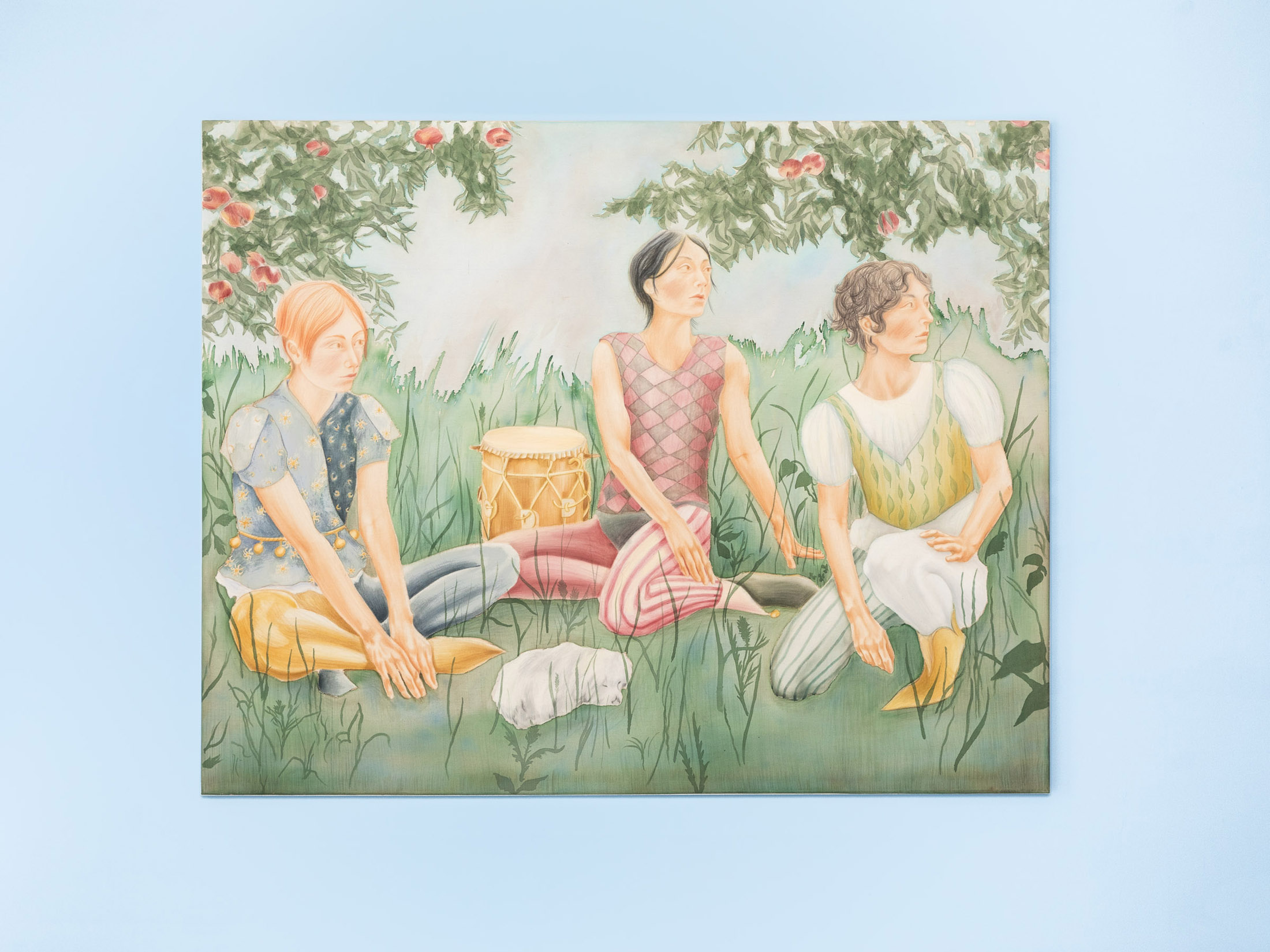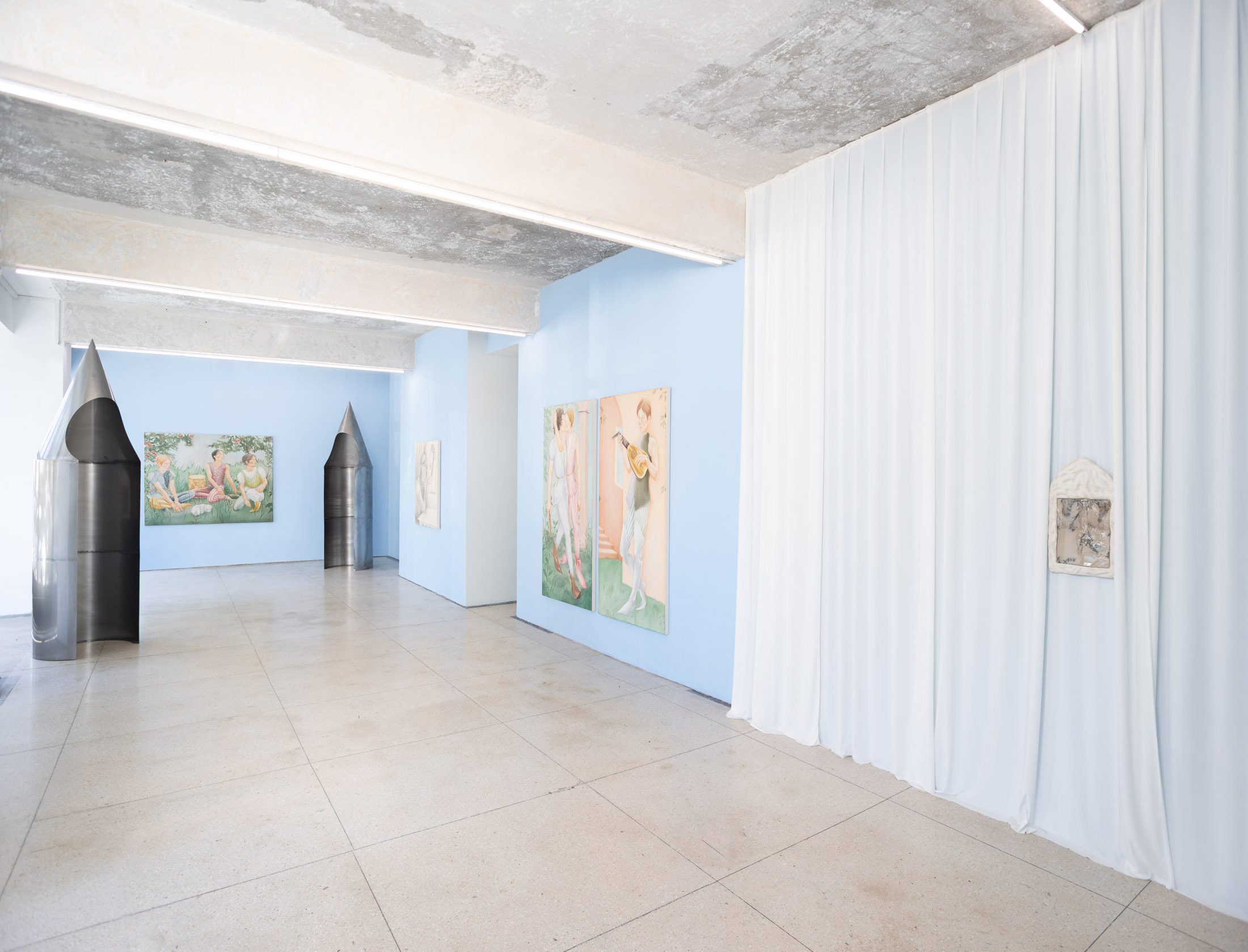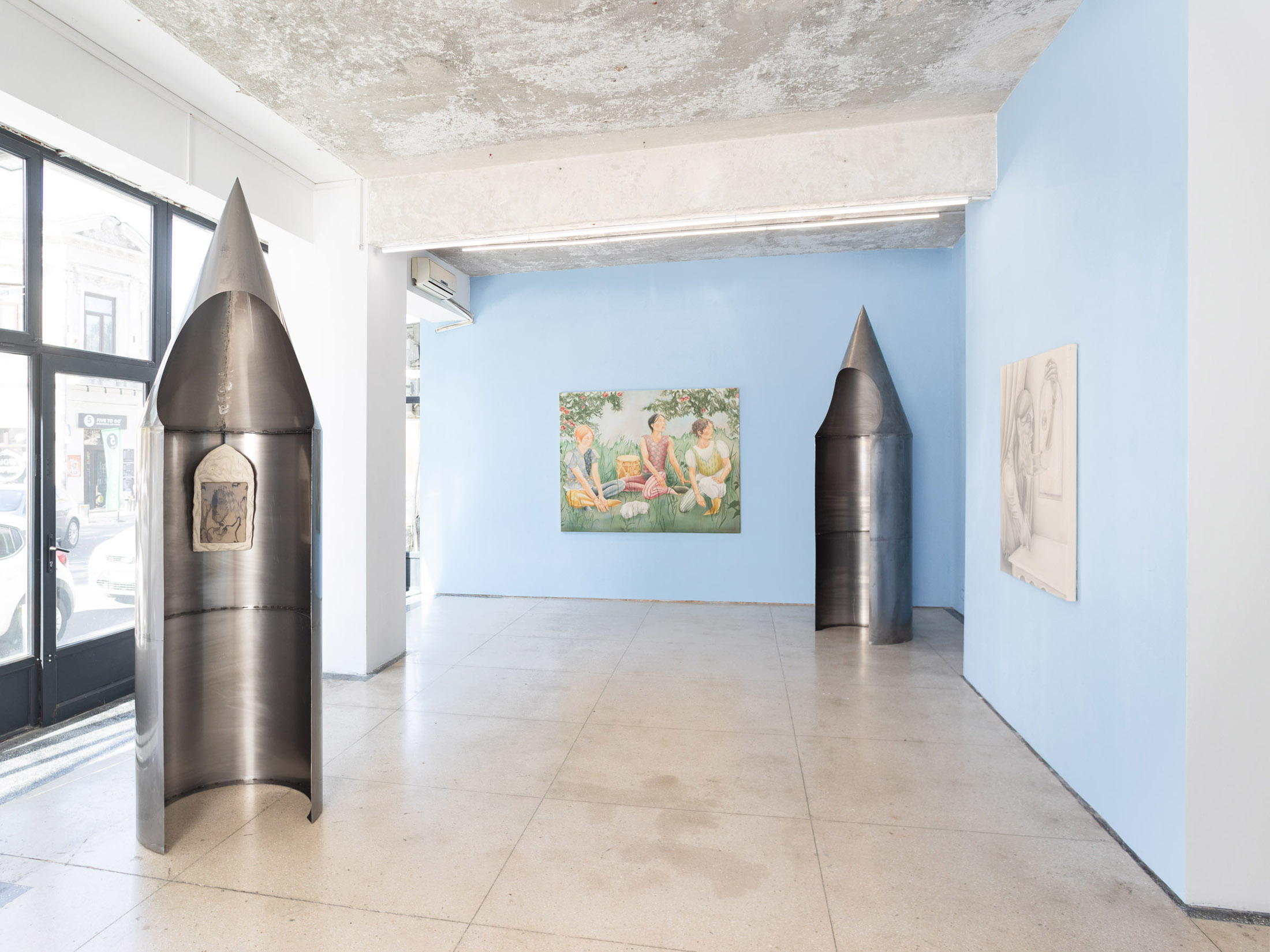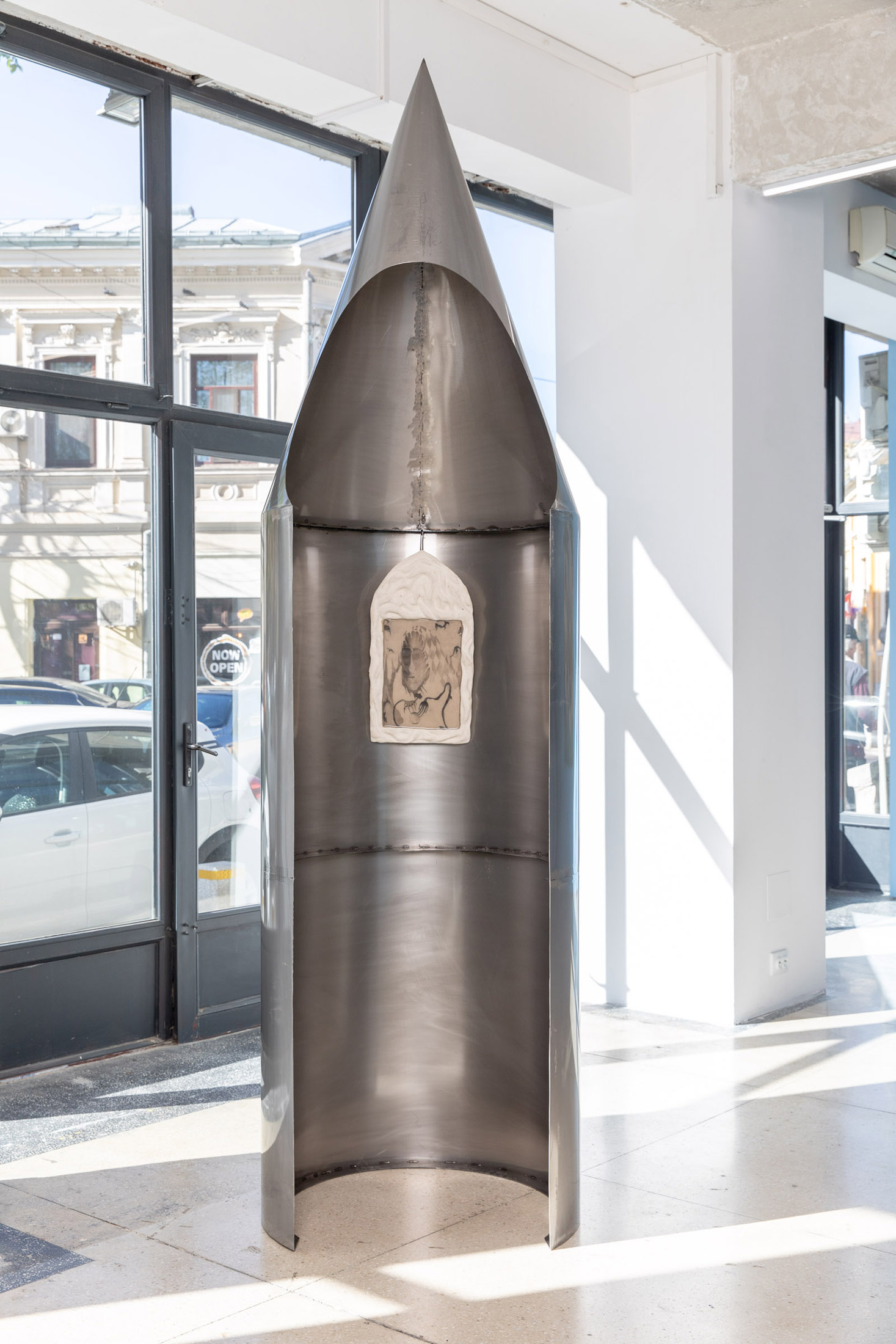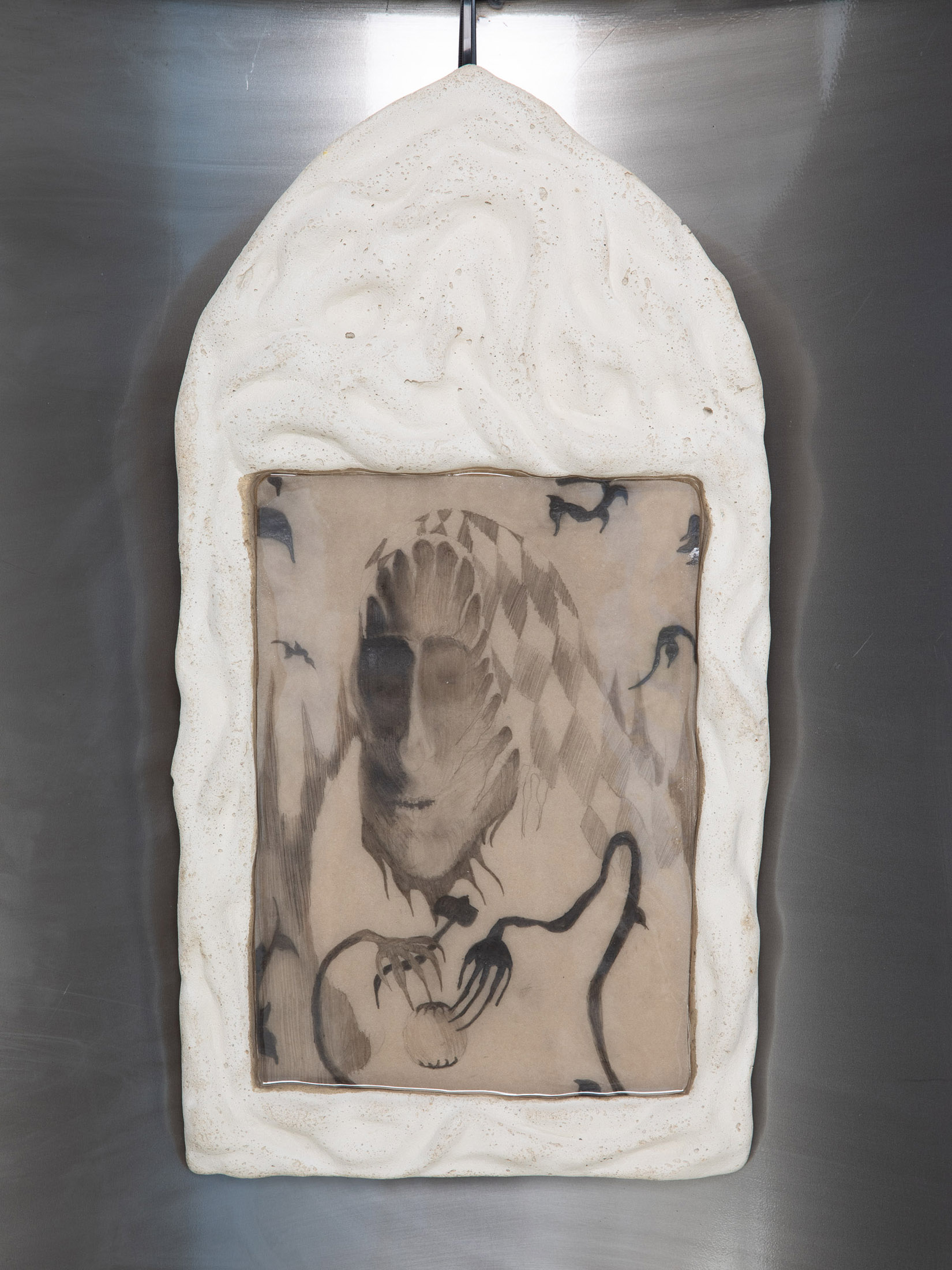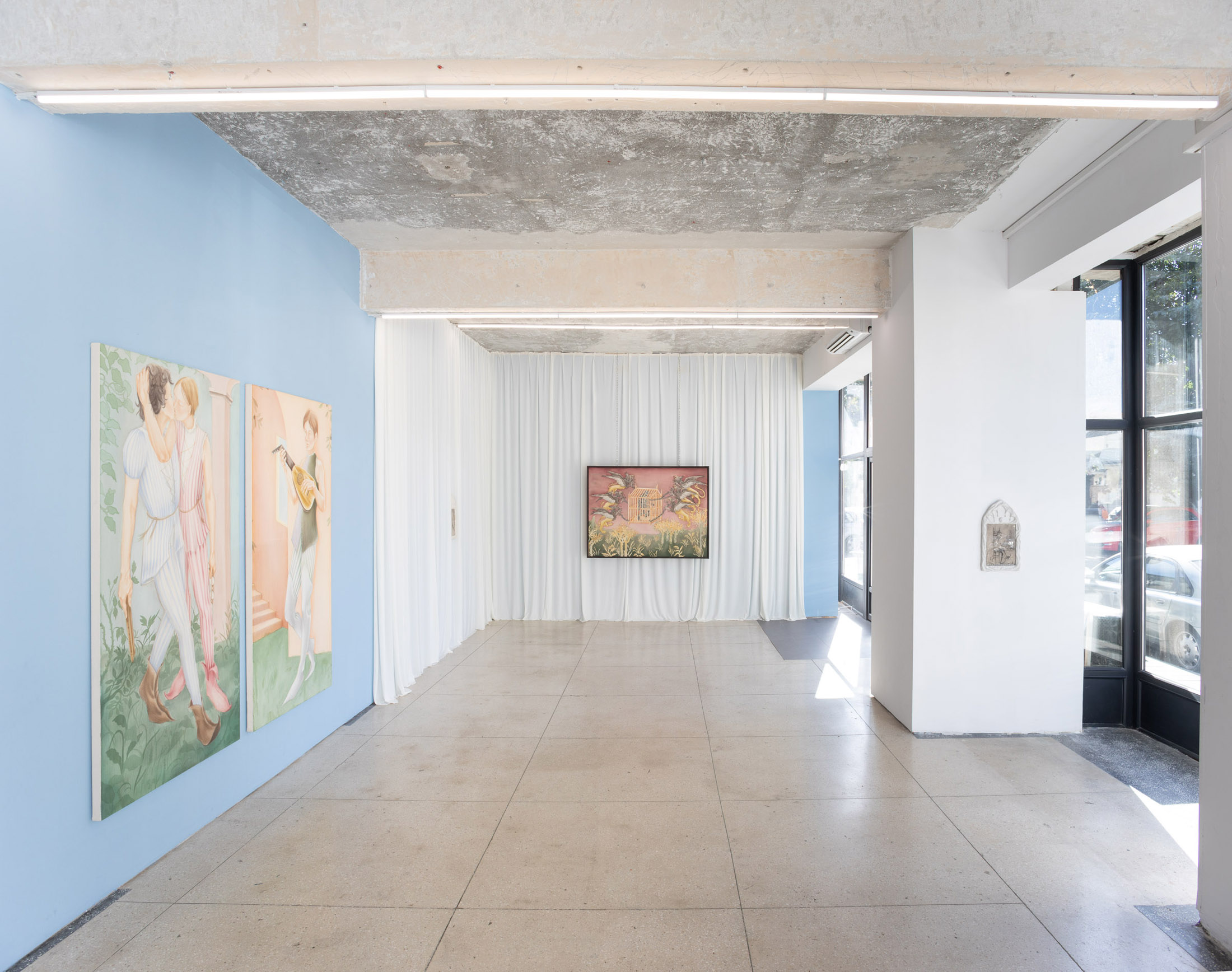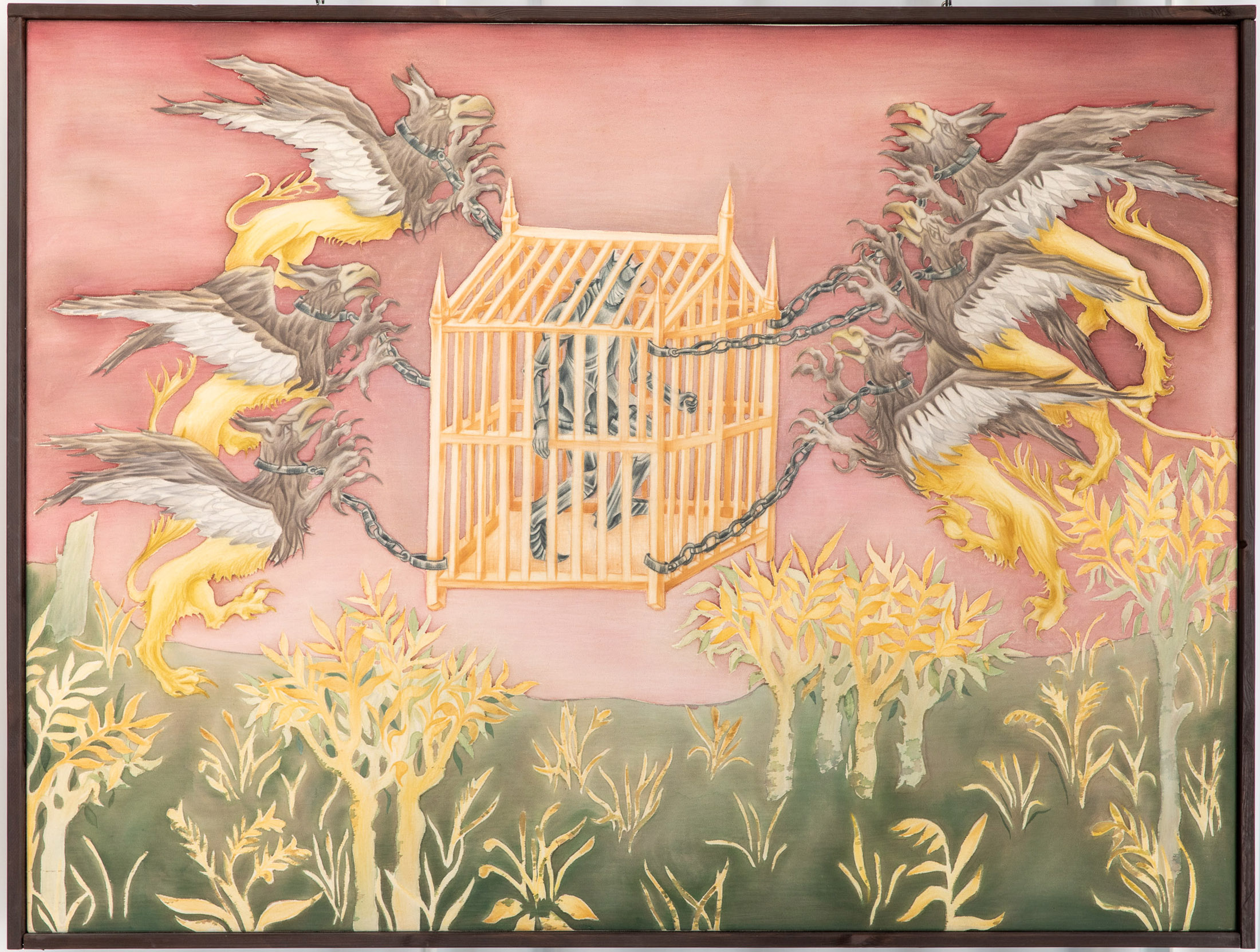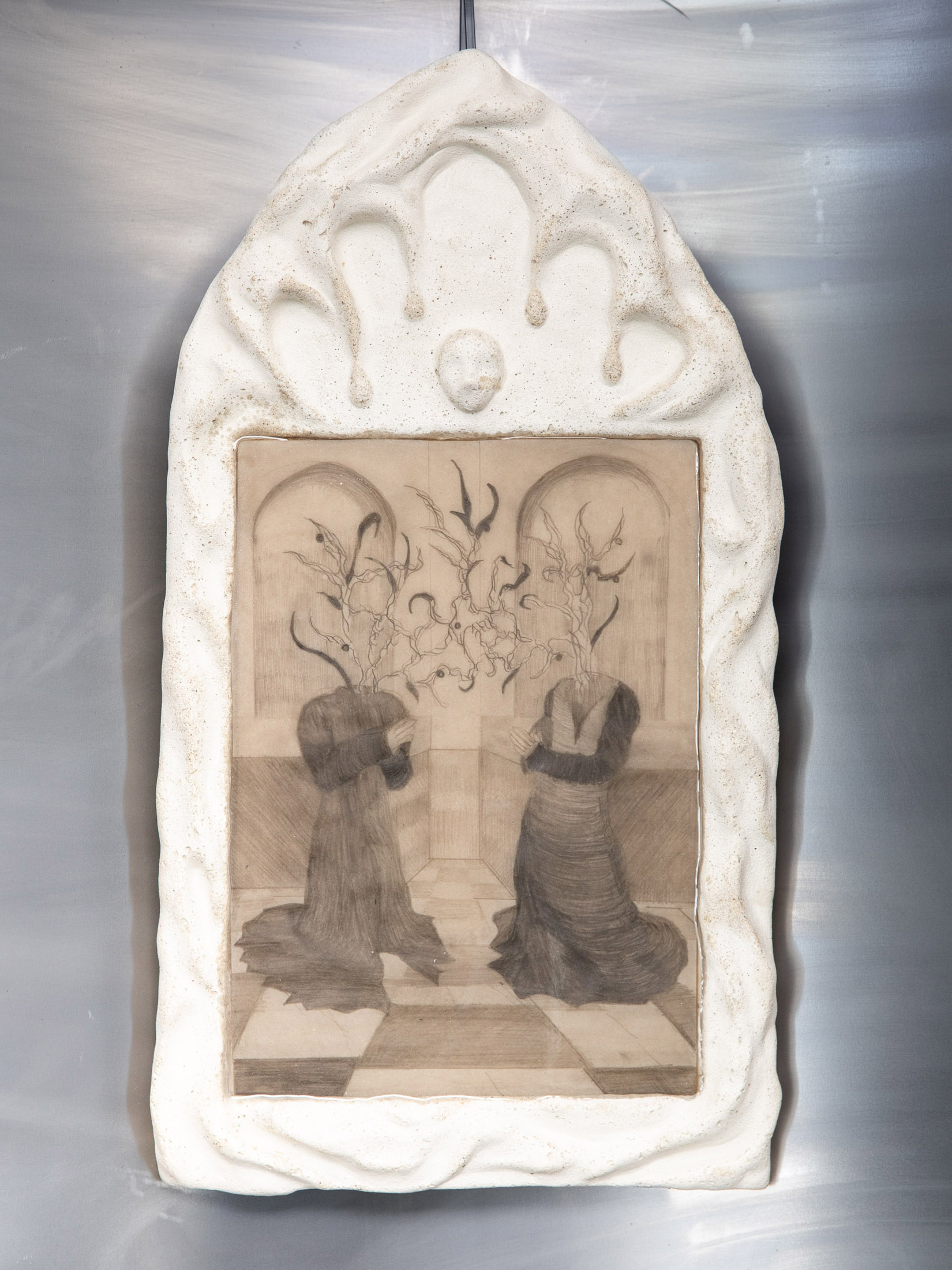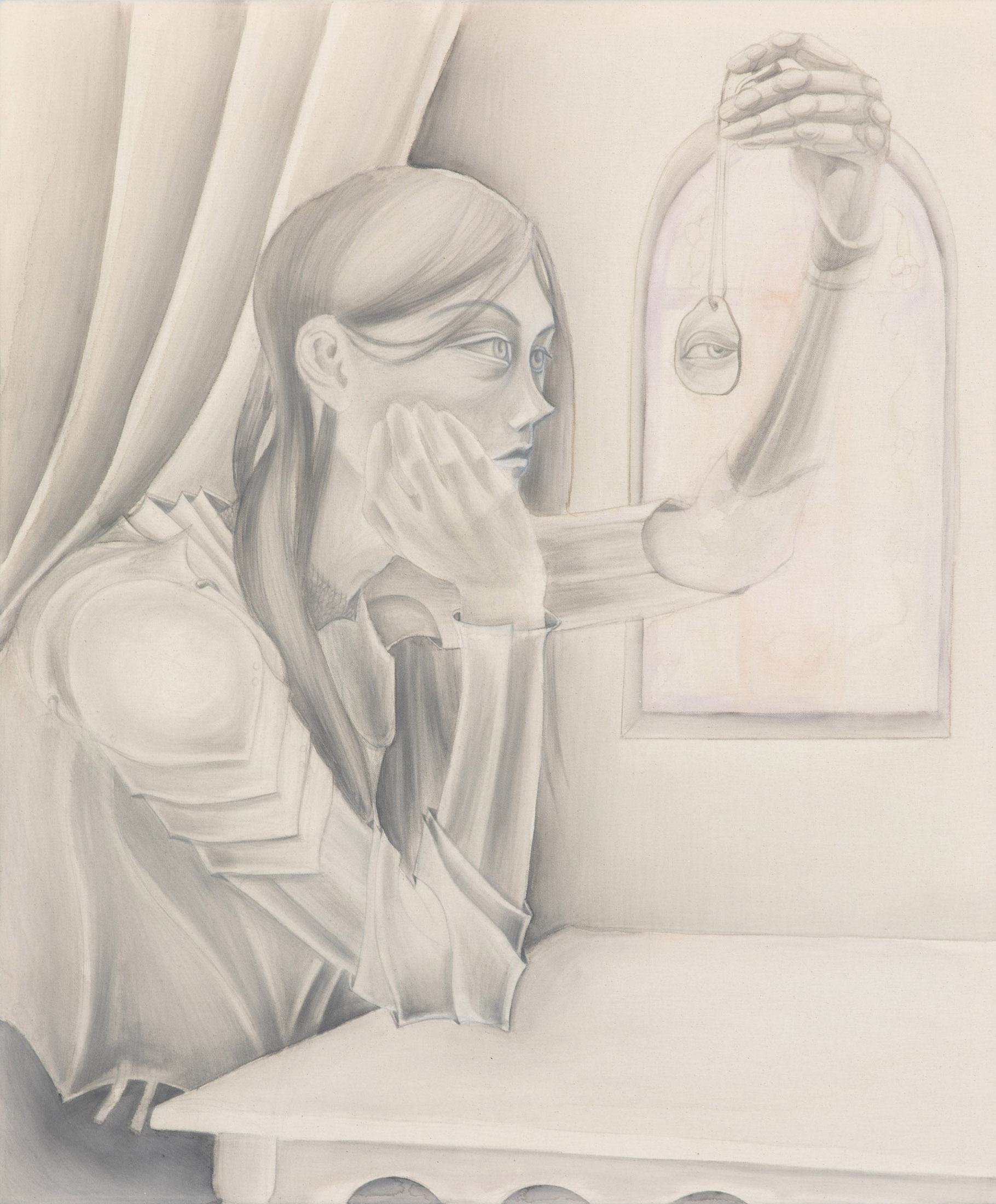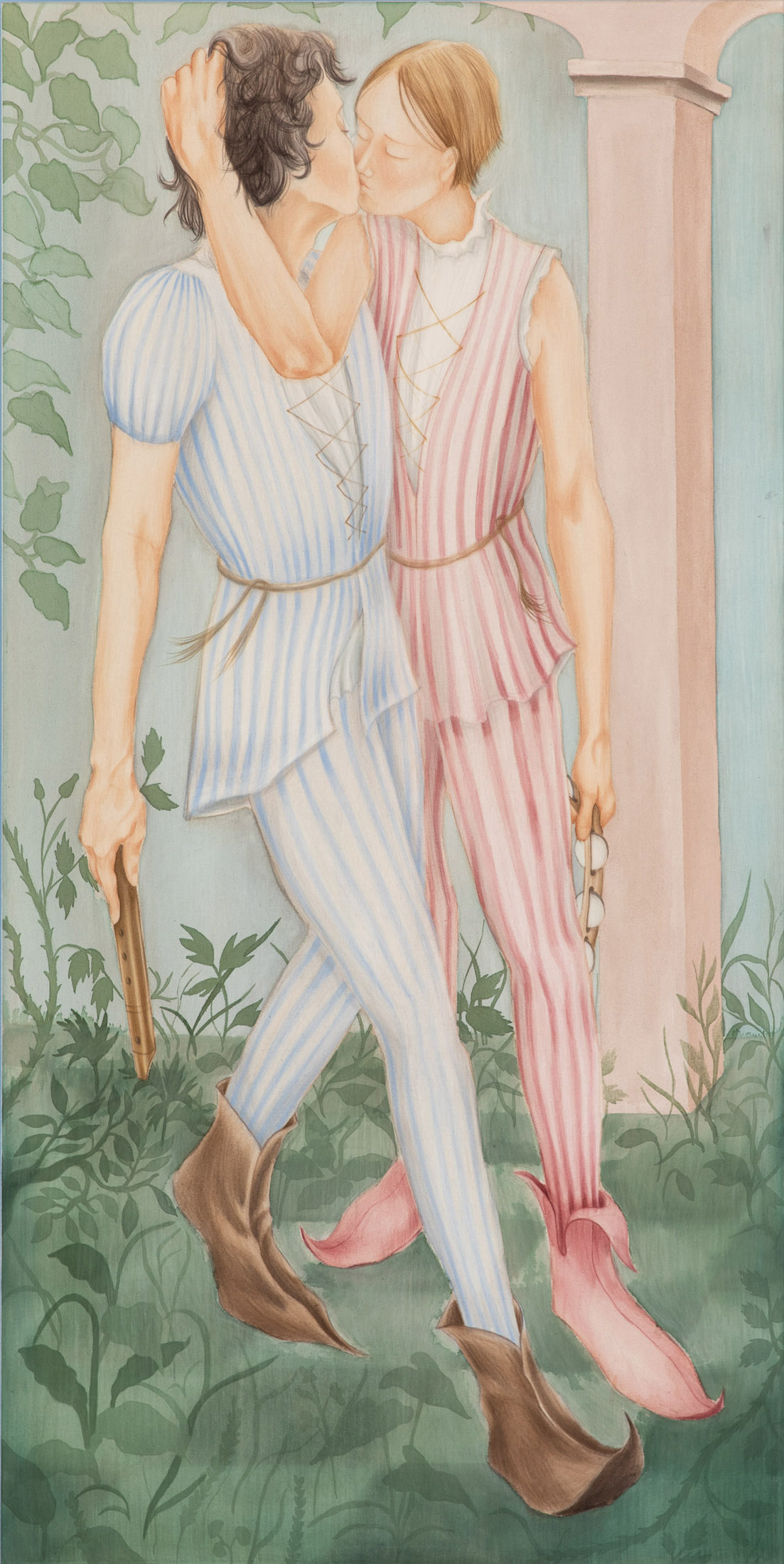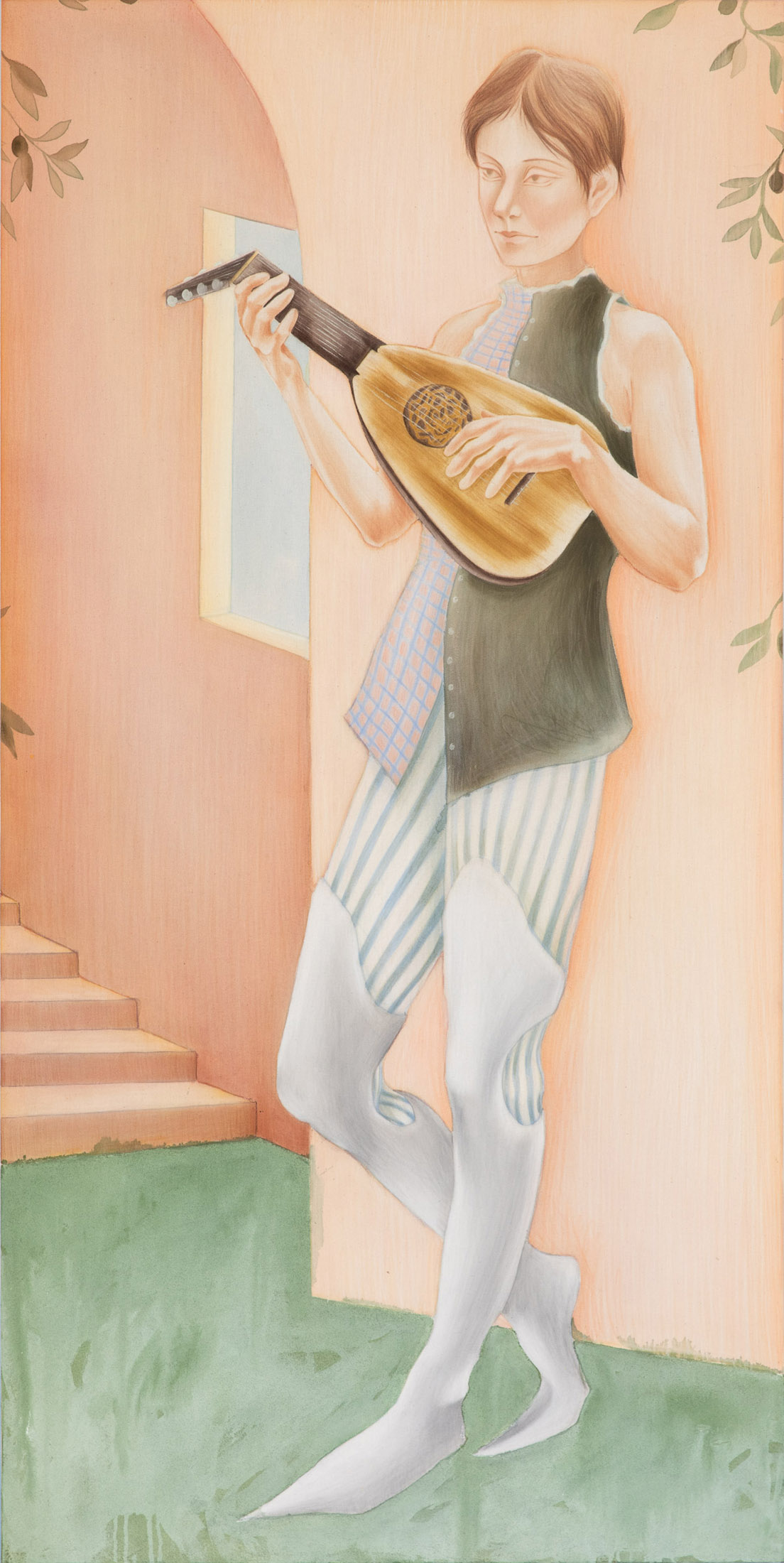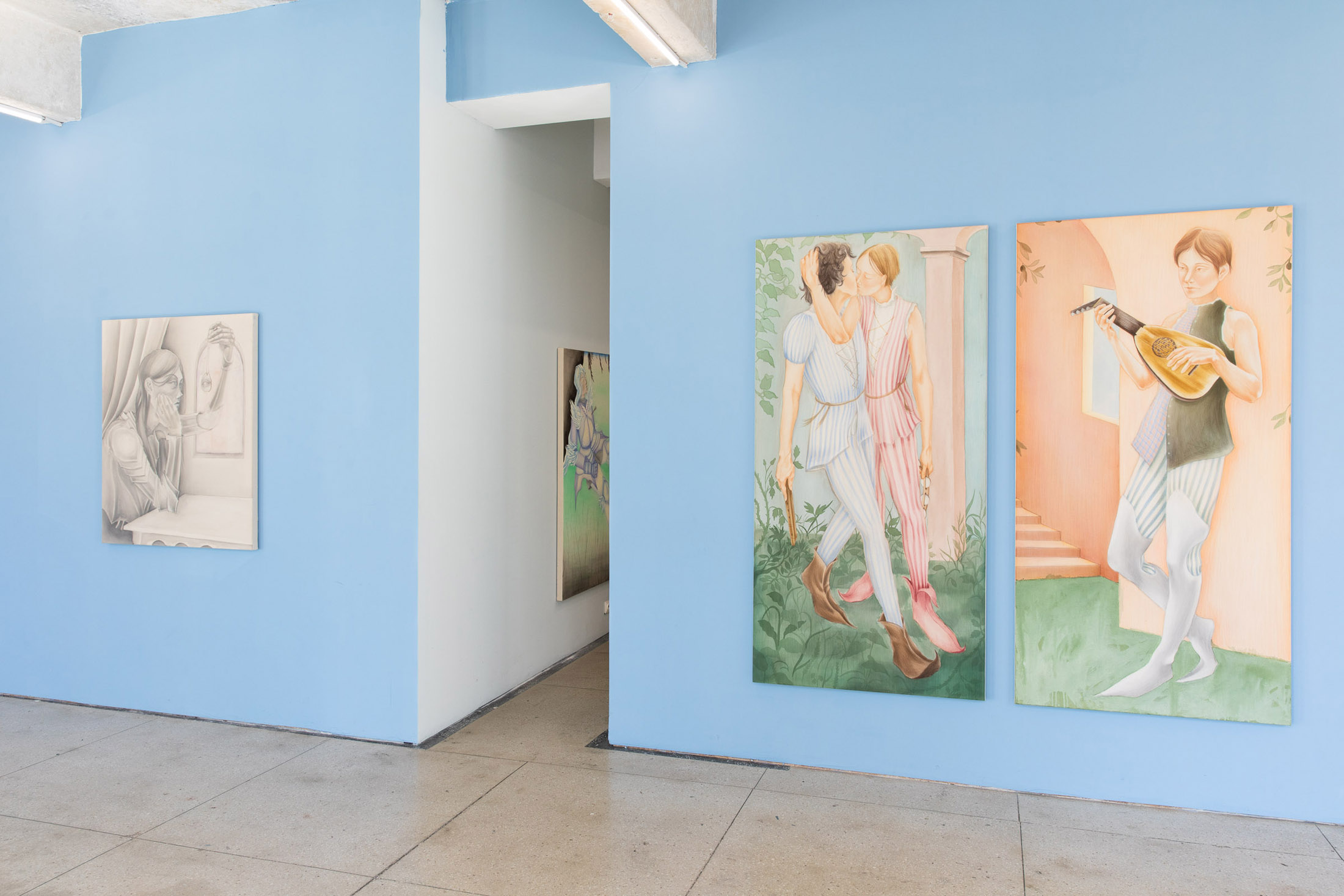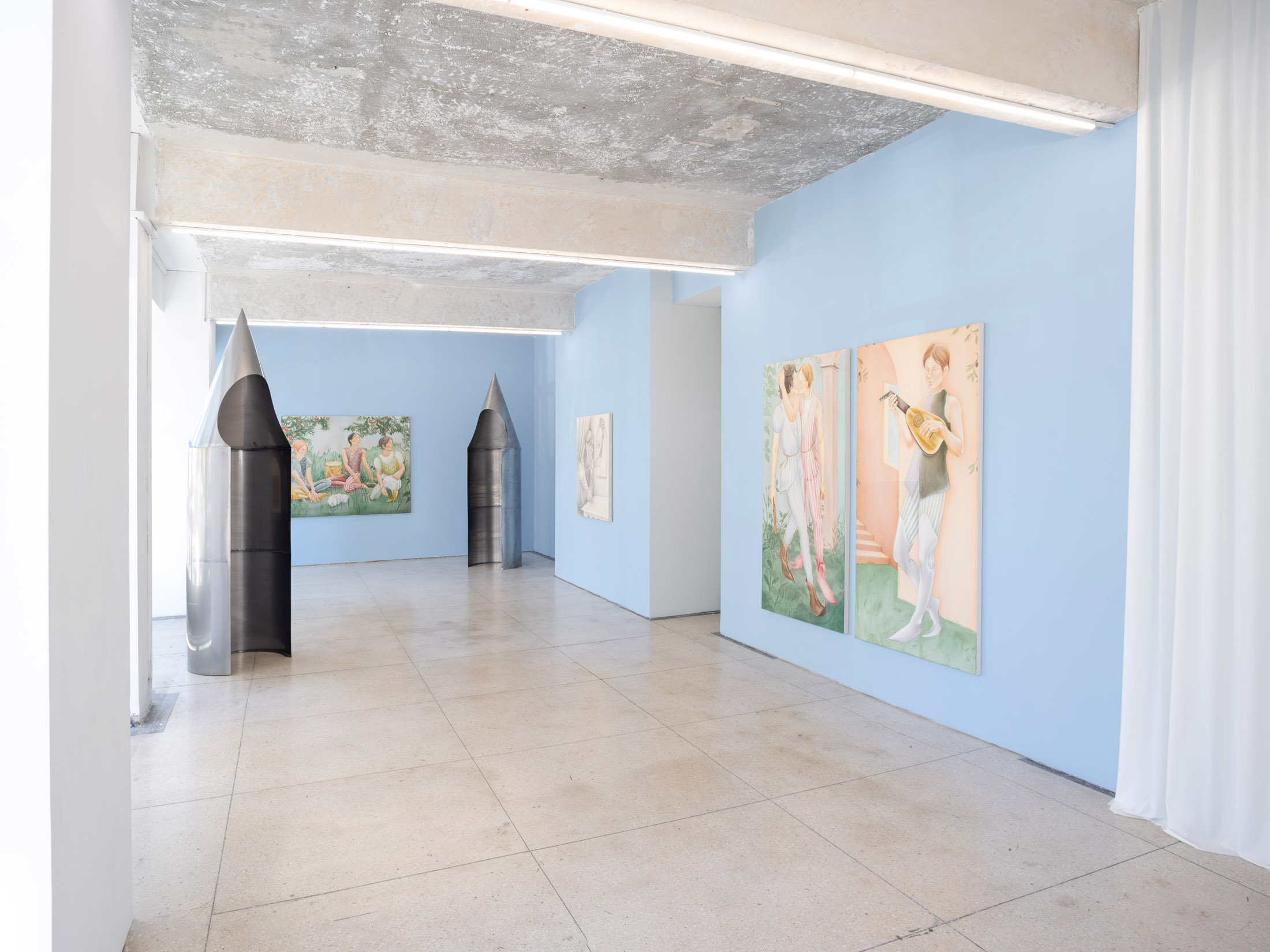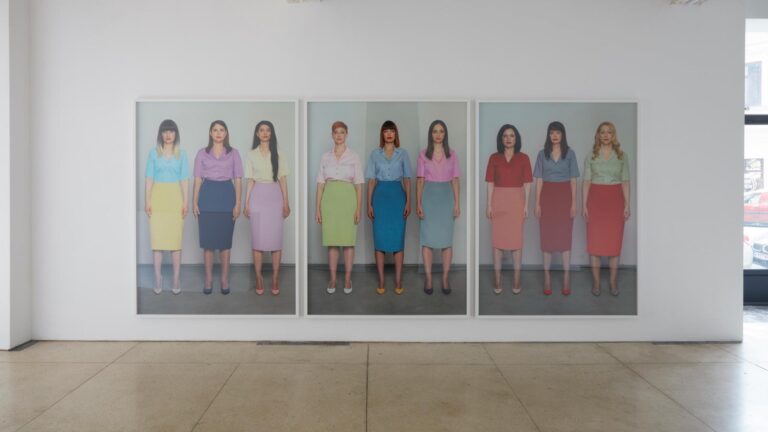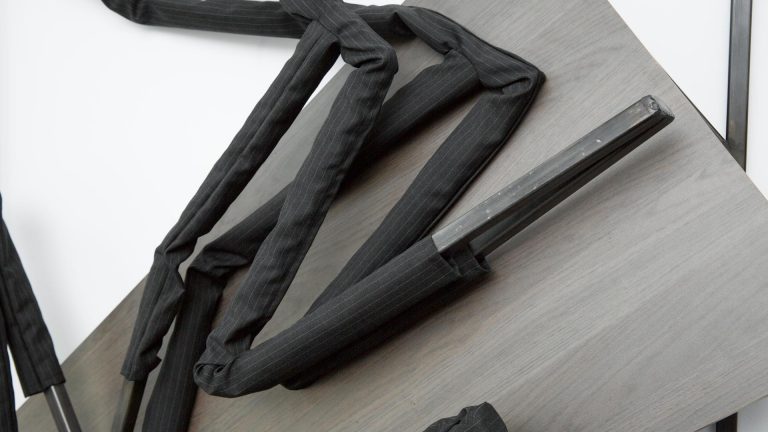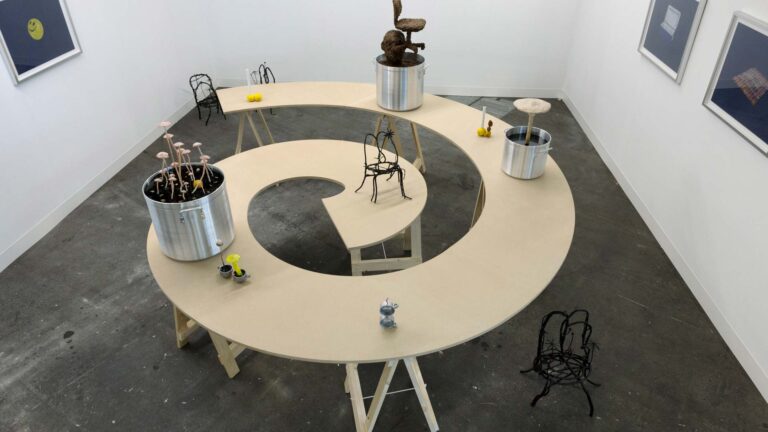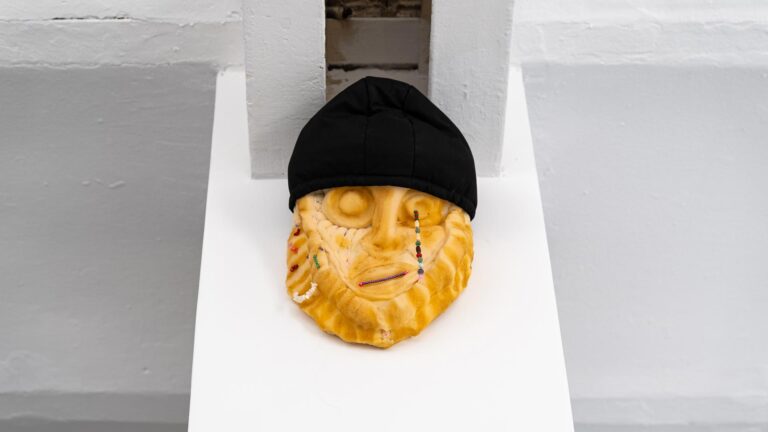Artists: Øleg&Kaśka
Exhibition title: Figuring Desire, Reshaping Monstrosity
Venue: Suprainfinit, Bucharest, Romania
Date: October 27 – November 17, 2023
Photography: Alexandru Paul / all images copyright and courtesy of the artists and Suprainfinit, Bucharest
Is fantasy a return to childhood?
If the child is an untamed traveller, a return to childhood is a return to a queer sense of wildness. A departure towards a place where the domestic objects of family life haven’t had the chance to fully instil the rules of heteronormativity upon our bodies. Assuming the position of the child is frightening. Yet the monsters are not underneath the bed, monsters are the realm of possibilities that fantasy and play erupt into the world of the adult. The return to childhood is not a journey to the past, but a stepping back from linear time into past-present, past-future, future-present.
A big leap to take–our adult lives are centred around the linear temporality of productivity rather than the fuzzy endings and beginnings of imaginative playtime. Adult life depends on the belief that progress is possible. Sustaining the cruel promise of future security, be it social, financial, or environmental, requires educating ourselves into a mode of pleasure that manifests as a coping mechanism. Outside the hours of organised productivity, we long for objects that give us comfort: for the uncritically cute (or uncritically gory), devoid of any political challenges.
What if pleasure is no longer comfort, but a mediation between aesthetic enjoyment and the struggle to stay-with the uncertainties of contemporary living-making on an increasingly damaged planet? It is this second mode of pleasure that Øleg&Kaśka mobilise in their artistic practice. In their works, fantasy is a disruptive return to childhood, understood as a realm of multiple possibilities for the past-present-future and as a deviation from normative temporalities. Their escape into the world of early modernity is but a double-bladed sword, intentionally designed as such: early modernity may be seen as the last epoch of the conventionally mythical figure, as well as the birthplace of man/woman, nature/culture, civilised/uncivilised as we know them today. Fundamentally, the monsters of Øleg&Kaśka are not Frankensteinian; they are alchemical instead.
Alchemical bodies
The stories told by Øleg&Kaśka are animated by the role of transmutation in early modern alchemy. In alchemy, the turning of metal into gold to produce the Philosopher’s Stone necessitated the reconciliation of binary opposites, transforming dual elements into One: fire/water, sulphur/mercury, as well as healthy/sick, young/old, male/female bodies. Throughout alchemical imagery, the process of transmutation is metaphorically translated into a polyphony of bodily forms. For instance, man/woman collapses into a bicephalic hermaphrodite, not unlike the way in which Øleg&Kaśka conceptualise their artistic project–Øleg&Kaśka is a collective superorganism, a non-binary, shapeshifting critter.
Akin to the emblem book Atalanta Fugiens, published in 1617, the paintings and drawings of Øleg&Kaśka portray a constellation of marginalised subjects, saying goodbye to the heroic male protagonist. As the atemporality of many fairy tales (once upon a time…) is questioned, the characters of Øleg&Kaśka inhabit the fuzzy time that constantly switches between the present and the past. Uchronic spirits of a close-by land:
𝔗𝔥𝔢 𝔟𝔞𝔯𝔡 is a streetworker, a queer poet, a champion of oral culture. Who else could tell the stories of emancipatory transmutation if not them? They are not made of text, but of sound.
𝔗𝔥𝔢 𝔟𝔩𝔞𝔠𝔨𝔰𝔪𝔦𝔱𝔥 is a labourer of the extractivist industries. The alchemist transforms the blacksmith into a flower, like a resilient plant on carbonised land.
𝔗𝔥𝔢 𝔩𝔢𝔤𝔢𝔫𝔡𝔞𝔯𝔶 𝔨𝔫𝔦𝔤𝔥𝔱𝔰 of the Giewont Mountains awake from their slumber more androgynous than ever. Stirred by the sound of chainsaws attacking the ancient trees of the forest, their armoured bodies shoot up like protective amulets of the dreams that go beyond current realities. Peacefully, the knights absorb the pain of destruction and hierarchy into their metal bones.
All in a chemical marriage between light and darkness.
A flower guards the entrance of the magic garden
The motif of the Maiden in the Tower imagines towers as spaces of confinement for the young disobedient princess. Divergently, the two welded-metal towers in the exhibition are passages between fantasy and reality, prosthetics of a wandering mind. The towers are tight refuges for intimate reverie in the main space of the gallery, itself acting like the Great Hall of a castle embellished with Millefleur tapestries, though peculiarly with a ceiling made of harsh, modernist concrete.
The subtle presence of flowers on the canvases does not only reference Polish tapestry from the 16th century, flowers having also been covertly used in queer symbolism, from the violet of Sappho to the calamus of Walt Whitman. Roots, plants and elongated thorns replenish the magical atmosphere of the characters in unearthly tapestries, where whispering, reflection and side-gazing cross-pollinate.
Like short entries in a twisted codex, these brief notes on the exhibition chart some paths through the multiple realms of Øleg&Kaśka’s practice. Let yourself be protected by the magical murmuring of the artist’s universe.
Text by Maria Persu, Edited by Cristina Vasilescu
Project co-funded by the Administration of the National Cultural Fund.
Øleg&Kaśka, Figuring Desire, Reshaping Monstrosity, 2023, exhibition view, Suprainfinit, Bucharest
Øleg&Kaśka, Figuring Desire, Reshaping Monstrosity, 2023, exhibition view, Suprainfinit, Bucharest
Øleg&Kaśka, The silver giants I, 2023, metal, white cement, epoxy resin and pencils on paper, 300 x 80 x 70 cm
Øleg&Kaśka, Terra Incognita V, 2023, white cement, epoxy resin and pencils on paper, 50 x 30 x 4 cm
Øleg&Kaśka, Figuring Desire, Reshaping Monstrosity, 2023, exhibition view, Suprainfinit, Bucharest
Øleg&Kaśka, Figuring Desire, Reshaping Monstrosity, 2023, exhibition view, Suprainfinit, Bucharest
Øleg&Kaśka, Terra Incognita VII, 2023, white cement, epoxy resin and pencils on paper, 50 x 30 x 4 cm
Øleg&Kaśka, Untitled, 2023, colour pencils and acrylic on canvas, pine frame, 124 x 164 cm
Øleg&Kaśka, Untitled, 2023, colour pencils and acrylic on canvas, pine frame, 124 x 164 cm
Øleg&Kaśka, Figuring Desire, Reshaping Monstrosity, 2023, exhibition view, Suprainfinit, Bucharest
Øleg&Kaśka, The break on the grass, 2023, colour pencils and acrylic on canvas, 155 x 195 cm
Øleg&Kaśka, Figuring Desire, Reshaping Monstrosity, 2023, exhibition view, Suprainfinit, Bucharest
Øleg&Kaśka, Terra Incognita VI, 2023, white cement, epoxy resin and pencils on paper, 50 x 30 x 4 cm
Øleg&Kaśka, Figuring Desire, Reshaping Monstrosity, 2023, exhibition view, Suprainfinit, Bucharest
Øleg&Kaśka, Untitled, 2023, colour pencils and acrylic on canvas, 120 x 100 cm
Øleg&Kaśka, Figuring Desire, Reshaping Monstrosity, 2023, exhibition view, Suprainfinit, Bucharest
Øleg&Kaśka, The Bard’s Kiss, 2023, colour pencils and acrylic on canvas, 200 x 100 cm
Øleg&Kaśka, The lute player, 2023, colour pencils and acrylic on canvas, 200 x 100 cm
Øleg&Kaśka, Figuring Desire, Reshaping Monstrosity, 2023, exhibition view, Suprainfinit, Bucharest
Øleg&Kaśka, Figuring Desire, Reshaping Monstrosity, 2023, exhibition view, Suprainfinit, Bucharest

